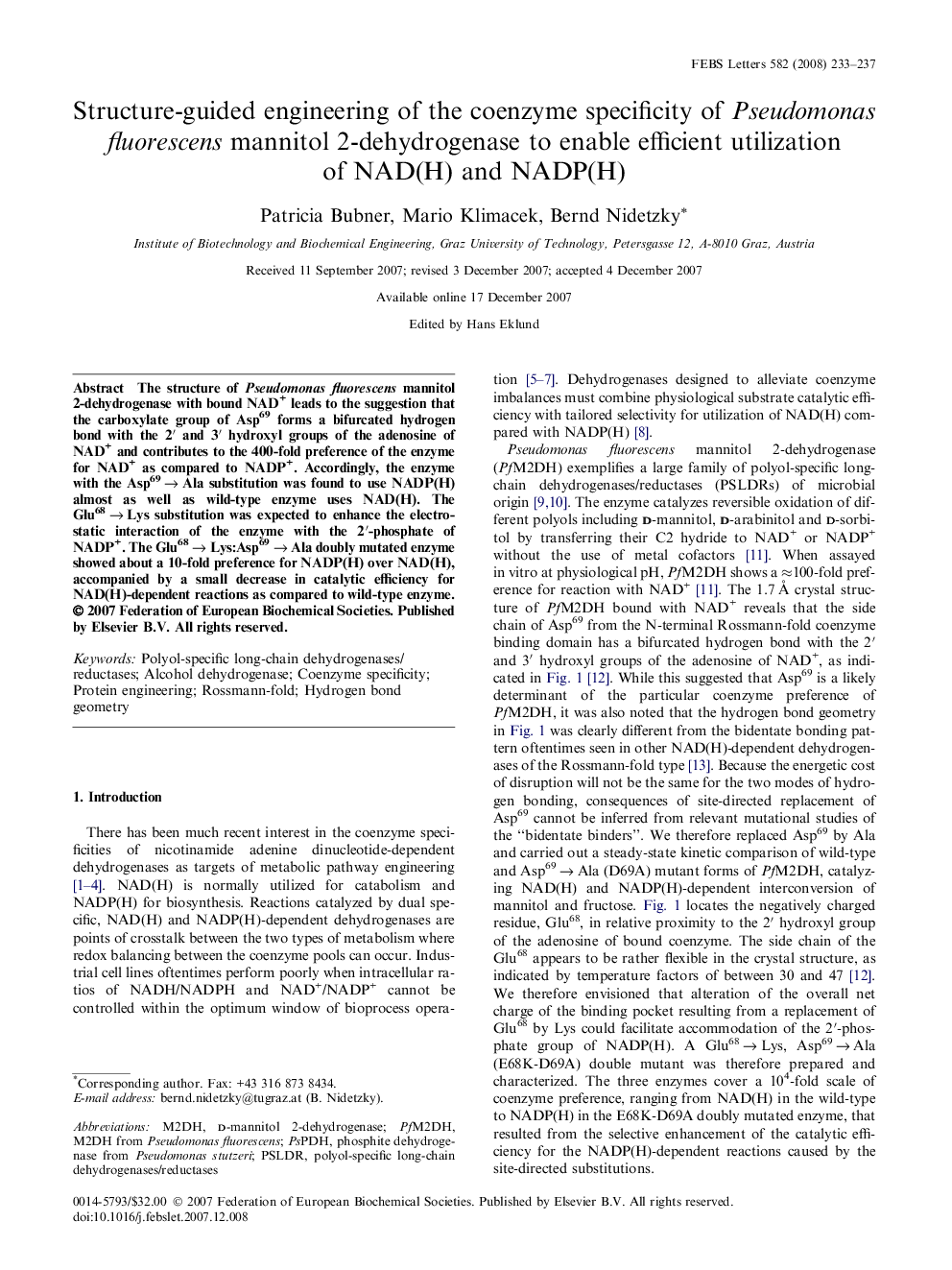| Article ID | Journal | Published Year | Pages | File Type |
|---|---|---|---|---|
| 2050669 | FEBS Letters | 2008 | 5 Pages |
The structure of Pseudomonas fluorescens mannitol 2-dehydrogenase with bound NAD+ leads to the suggestion that the carboxylate group of Asp69 forms a bifurcated hydrogen bond with the 2′ and 3′ hydroxyl groups of the adenosine of NAD+ and contributes to the 400-fold preference of the enzyme for NAD+ as compared to NADP+. Accordingly, the enzyme with the Asp69 → Ala substitution was found to use NADP(H) almost as well as wild-type enzyme uses NAD(H). The Glu68 → Lys substitution was expected to enhance the electrostatic interaction of the enzyme with the 2′-phosphate of NADP+. The Glu68 → Lys:Asp69 → Ala doubly mutated enzyme showed about a 10-fold preference for NADP(H) over NAD(H), accompanied by a small decrease in catalytic efficiency for NAD(H)-dependent reactions as compared to wild-type enzyme.
